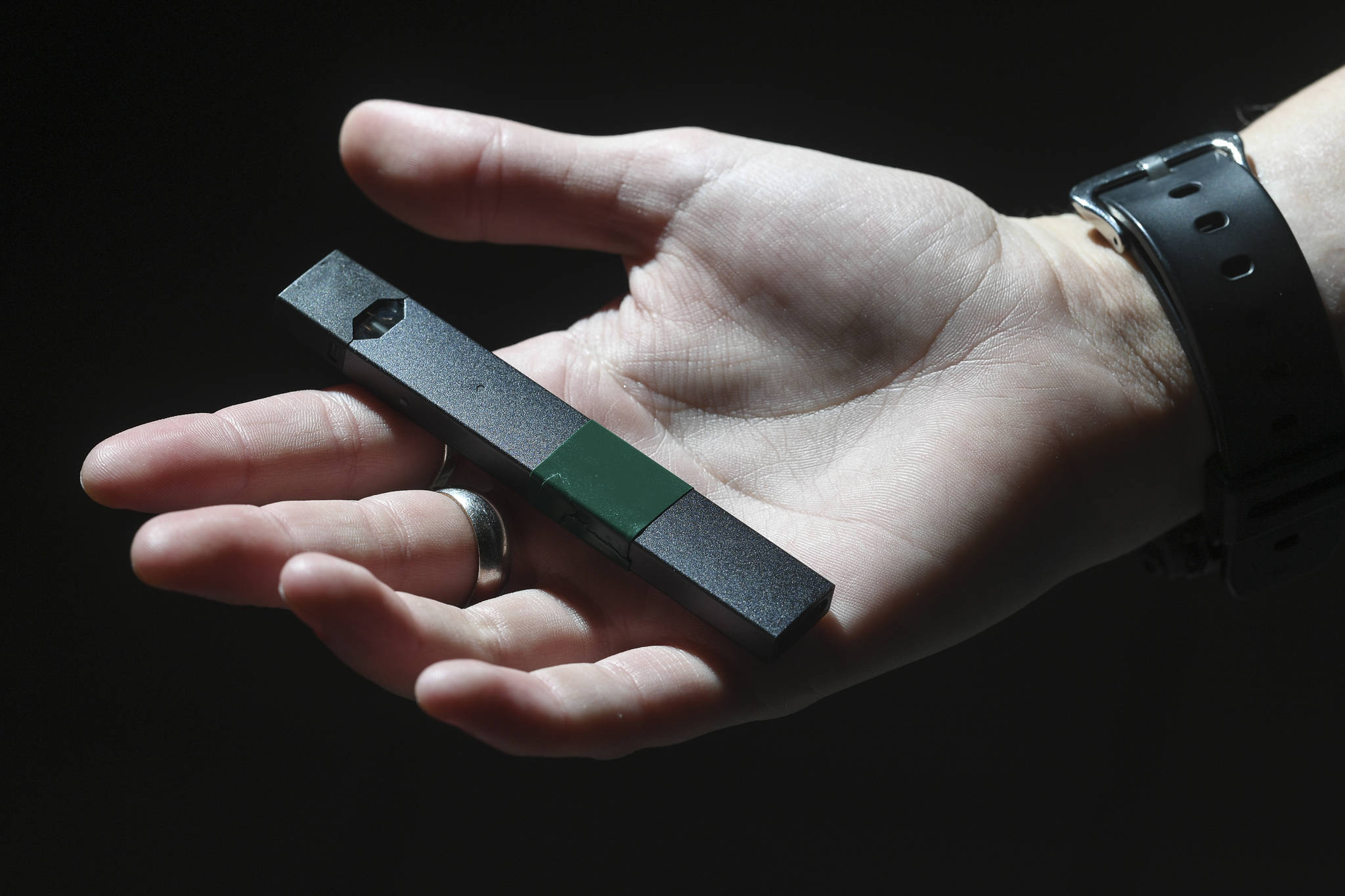You’ve probably seen this play out in your neighborhood, town or village. Seemingly oblivious to danger, a group of teenagers pass between themselves a small black device that looks like a USB drive. They chat and take turns inhaling from the device, while a small puff of aerosol trails behind them.
E-cigarette, or vaping, products have grown in popularity nationwide, especially among youth, and are minimally regulated by the U.S. Food and Drug Administration. Health officials have become increasingly concerned about the short- and long-term effects of these products on our children’s health.
Thankfully, new federal legislation signed into law on Dec. 20 will increase the age of sale for all tobacco products, including e-cigarettes, to 21 years old nationwide. This move is expected to decrease youth tobacco use, including vaping, and save lives. This represents a critical step forward in addressing this important public health issue, but there is still a great deal about vaping that warrants further attention.
E-cigarette, or vaping, products are cleverly designed and easy to conceal. They are composed of a heating element, a battery, a mouth piece, and a cartridge or pod containing vaping liquid. The liquid is available in flavors like mango and bubblegum that appeal to youth, and also contains nicotine and/or THC (the active ingredient in marijuana) plus a wide range of other chemicals.
Originally developed to help people quit smoking but never approved for this use, these products eventually found other niche markets. Aggressive, early marketing efforts by companies like Juul successfully enticed young people. A recent Centers for Disease Control and Prevention (CDC) report found that approximately a quarter of high school students and about 10% of middle school students nationwide reported current (past 30-day) use of e-cigarette tobacco products.
In recent months, concern over vaping has escalated with a growing national outbreak of life-threatening lung injury called EVALI (e-cigarette, or vaping, product use-associated lung injury). Since March 2019, more than 2,500 hospitalizations and over 50 deaths due to EVALI have been reported to CDC, often involving otherwise healthy teens and young adults. One chemical in particular, vitamin E acetate, has been linked to the outbreak, but other chemicals may be contributing to the outbreak as well.
Earlier this month, Alaska joined the rest of the nation with our first EVALI case. The Alaska patient reported using a THC vaping product obtained from outside of Alaska from an informal source. Thankfully, the patient recovered.
Even though Alaska has had only one identified case of EVALI, this should be a wake-up call to anyone who uses these products.
In addition to concerns about EVALI, there is still much to learn more broadly about what’s in vaping liquids and how they affect our health. Many people, especially youth, also don’t realize that a vape pod can contain as much nicotine as an entire pack of cigarettes. Nicotine is highly addictive and especially dangerous for young people whose brains are still developing and at increased risk for addiction.
Vaping devices are also commonly used by youth to deliver THC, the active ingredient in marijuana, which has grown more potent over time. As the U.S. Surgeon General Jerome Adams said recently of this drug and its increased potency, “This ain’t your mother’s marijuana.”
Marijuana use by youth has been associated with a range of developmental and social problems. Early and continued use of marijuana can affect memory and attention, which can make learning and decision-making more difficult. Adolescent use is also associated with poorer school performance, increased school absences and drop-out rates, and mental health problems.
Like any medication or chemical exposure, the frequency, dosage and route of delivery are all critical factors in determining the likelihood of toxicity.
Your safest option is to not start at all. However, if you or a family member smokes or vapes, please talk to your health care provider or call Alaska’s Tobacco Quit Line, 1-800 QUIT NOW / 1-800-784-8669. If you want to talk to a young person you know about the risks vaping, there are resources to help like Vape Talk from the American Lung Association.
As I think back to those teenagers sharing a vaping pod, I find myself thinking how we’ve been through tough battles with tobacco and prescription opioids and now we’re facing this new battle. We should remember what we’ve learned from those past experiences — it can take time for science and policy to catch up with industry claims about new products.
I am thankful that the age to buy these products will increase to 21, but our work is far from over on this front. Until we have a better understanding of the range of health risks associated with vaping, it’s important to remember that an ounce of prevention is worth a pound of cure. We certainly don’t want another generation paying the price with their lives because of what we don’t yet know.
• Dr. Anne Zink, M.D., is a board-certified emergency physician and Alaska’s chief medical officer. Columns, My Turns and Letters to the Editor represent the view of the author, not the view of the Juneau Empire.

